The Appraisal
The Market for F. N. Souza and Other Indian Modernists Is Hot. What Is Driving the Surge?
A 1990s painting by the artist that would have made $30,000 a few years ago recently sold for half a million dollars.
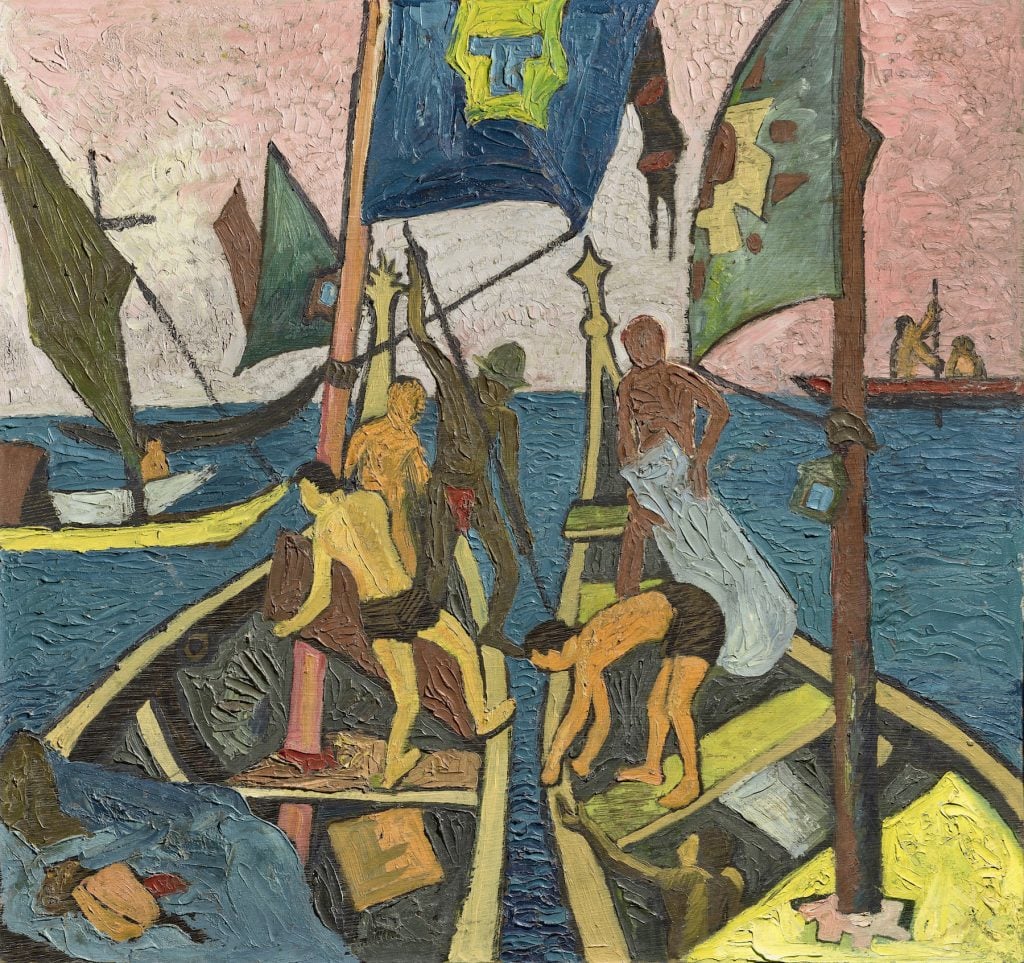
A 1990s painting by the artist that would have made $30,000 a few years ago recently sold for half a million dollars.

Eileen Kinsella

For the past two decades, the market for artworks by Francis Newton Souza (1924–2002) and other so-called Indian modernist painters has been thriving. However, it has also been somewhat concentrated, with specialists in that field driving demand for Souza’s bold, almost raw, imagery, which references the history of his native country.
In the last the half-dozen years, though, the market has been shifting, experts say, with Souza gaining popularity with a wider array of collectors. This year, which marks the centenary of Souza’s birth, interest in the artist may expand even further. He and other Indian painters, including Syed Haider Raza and Amrita Sher-Gil, are getting prominent placement in the upcoming Venice Biennale, titled “Foreigners Everywhere,”
Demand “has grown in leaps and bounds over the last five to seven years, in terms of crossing borders and getting international recognition,” said Nishad Avari, Christie’s head of South Asian and modern art. Raza, for example, lived in France for more than 50 years, but only had his first solo show at the Pompidou Center in February last year.
This week, Souza is getting the star treatment at Christie’s, which is offering no fewer than three dozen works that span the entirety of his long and prolific career. The works, on offer across two sales of South Asian modern and contemporary art on Wednesday, carry a collective estimate range of $2.9 million to $4.3 million.
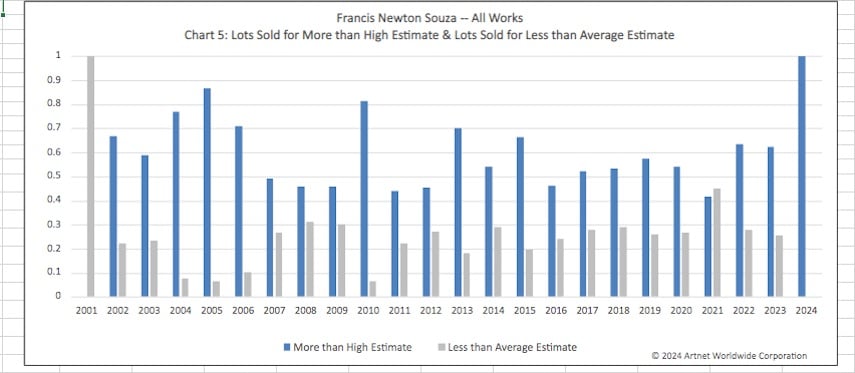
Source: Artnet Price Database
The current auction record for Souza is $4 million for a large early painting, Birth (1955), which sold at Christie’s New York in September 2015, followed by the $3.6 million paid for Hunger (1960) at Pundole’s auction house in Mumbai last August. Saffronart in New Delhi sold Man and Woman Laughing (1957) for $2.6 million, also in September 2015. To date, roughly 20 works by the artist have sold for above $1 million each at auction, according to the Artnet Price Database.
“Works from the 1950s and early ’60s are considered the apex of his figurative oeuvre,” said Avari. However, as has happened with other great artists, there is simply no supply of those works, so now it’s his art from the 1980s and 1990s that “are really taking off in the market.” For example, a reclining nude painting from the 1990s that would have made $30,000 to $40,000 half a dozen years ago, recently fetched half a million dollars.
Avari said that the new interest in Souza is driven, in part, by the recent push to view modernism as a global phenomenon, as opposed to one that was confined to the West. Souza, for instance, “used to sit with Lucian Freud and Francis Bacon at the Colony Room in Soho, London,” Avari said. “They shared Henrietta as a model. All of them painted her at the same time.”
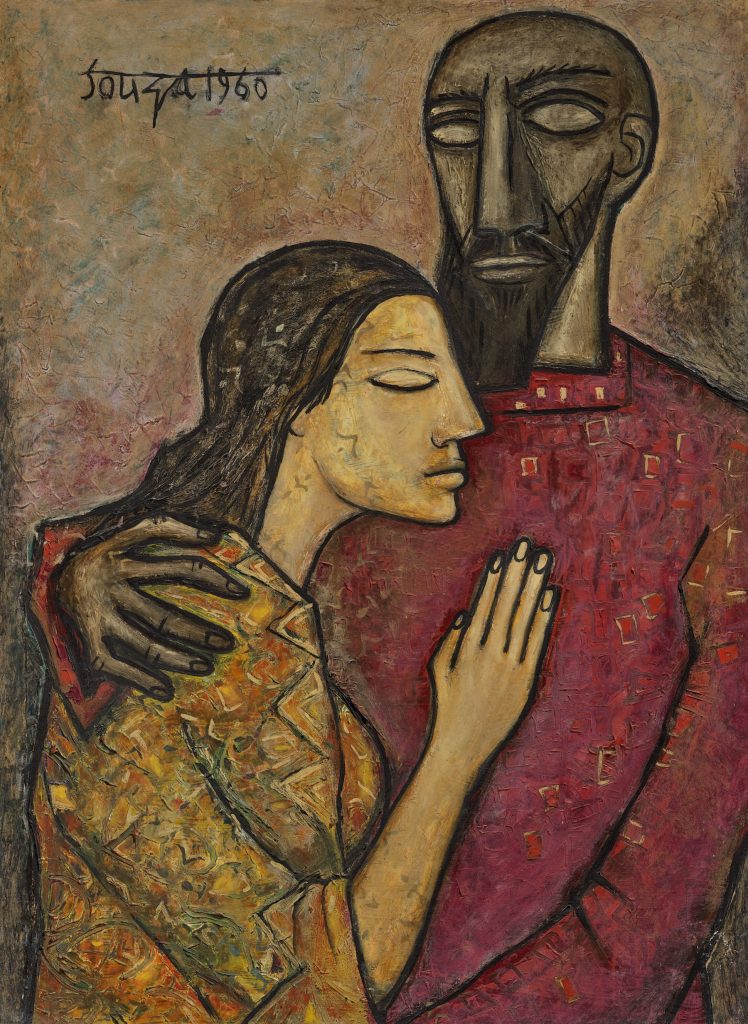
Francis Newton Souza, The Lovers (1960). Image courtesy of Christie’s.
Avari said that, while sourcing Souza works was certainly a focus as he was securing consignments for the upcoming auctions, “we definitely got a little lucky as well, because works we’ve been chasing for a while” started to become available with the arrival of the centenary. “This is the time, because it’s a celebration of his life,” Avari said.
The type of people buying Souza has changed, he said. “It started off with nonresident South Asians living mostly in the West, in Europe and America. Now the interest is coming largely from India.”
There are also “several new institutions, not just in South Asia but in East Asia and in the Middle East all looking at this category and especially the postwar period as a global phenomenon,” he added.
Among the career-spanning highlights in the sales are The Naked Family (Bombay Beggars), 1944, one of Souza’s signature small-format watercolors from that decade that depict the Goan landscape, illustrating the plight of India’s impoverished. It carries an estimate of $30,000 to $50,000. Another such example is Men in Boats (1945), which was acquired directly from the artist by the present owner and is being seen publicly for the first time in over 70 years (estimate: $300,000–$500,000).
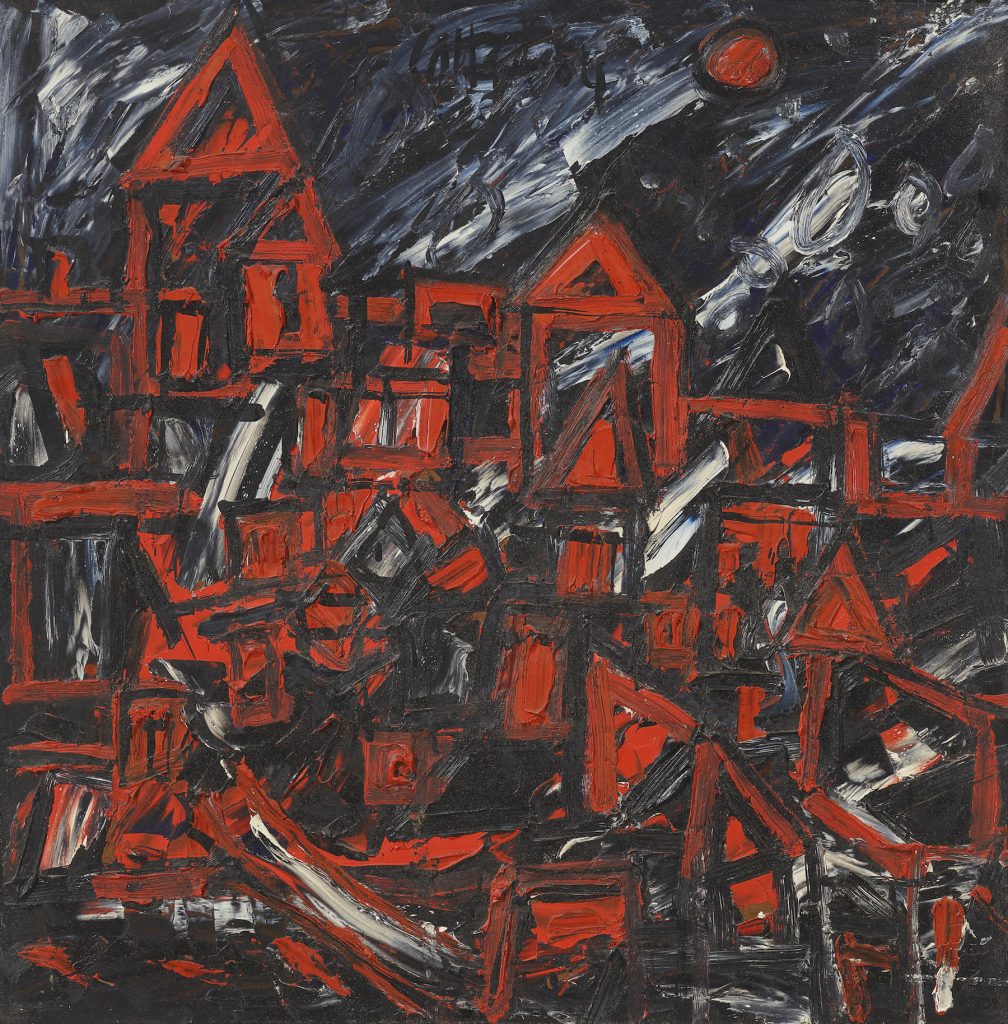
Francis Newton Souza, Landscape of Hampstead (1964). Image courtesy Christie’s.
Souza left Bombay for London in 1949, hoping to find patronage and a more accepting audience. He remained for most of the next 20 years, though his early time there was “among the most challenging of his career,” according to Christie’s. He eventually hit his stride, thanks to major support from dance promoter and arts patron Robin Howard.
One of the works from Howard’s collection, The Lovers (1960), is considered one of Souza’s most important figurative paintings, and has not been seen in public since it was painted. It’s estimated at $700,000 to $1 million.
Meanwhile, Landscape of Hampstead, London (1964) only left Souza’s studio in the 1990s, while he was living in New York. Since then, the work remained within the same family and will be offered for the first time at auction (estimate: $70,000–$100,000).
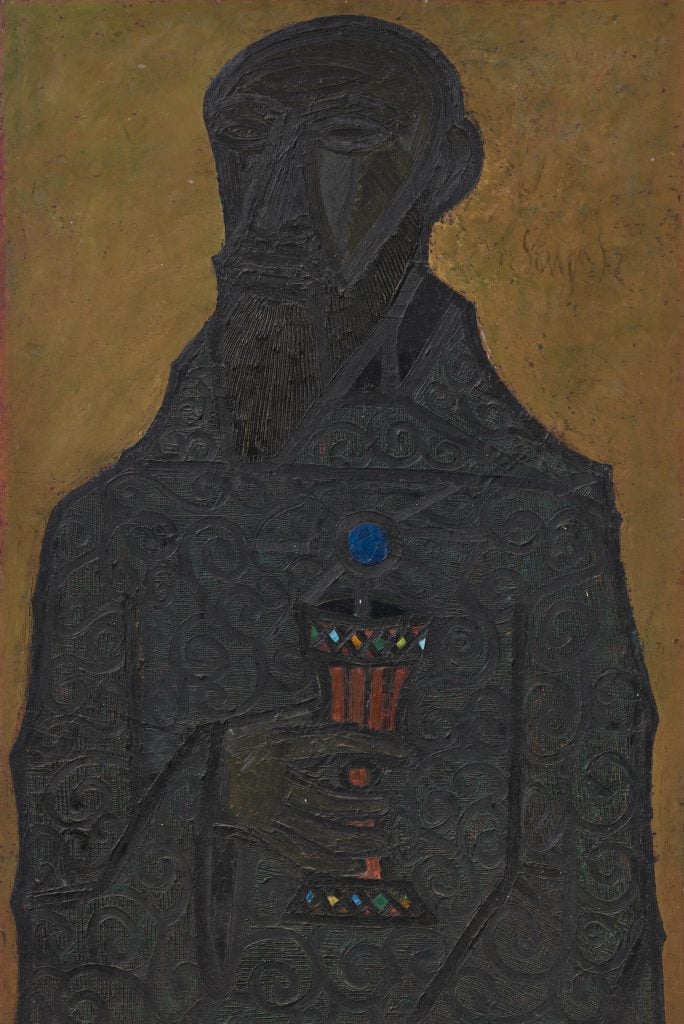
Francis Newton Souza, Priest With Chalice (1953). Image courtesy Christie’s.
Another work in the sale, dating from 1953 and titled Priest With Chalice (estimate: $500,000 to $700,000), has been in a private collection in the Midwest in the U.S. since the 1970s.
Souza, who was raised as a Roman Catholic in Goa, was said to be fascinated, early in his life, by the traditions of the church, from its imposing architecture and the vestments of the priests to the implements they used in worship. “Although this fascination would turn into a repudiation of the faith later in life, the visual culture of Catholicism would continue to influence his work,” Christie’s writes in its sales materials.
“Nobody knew where it was,” Avari said of Priest With Chalice. Coming across it while planning the sale was an “amazing discovery moment,” he added.